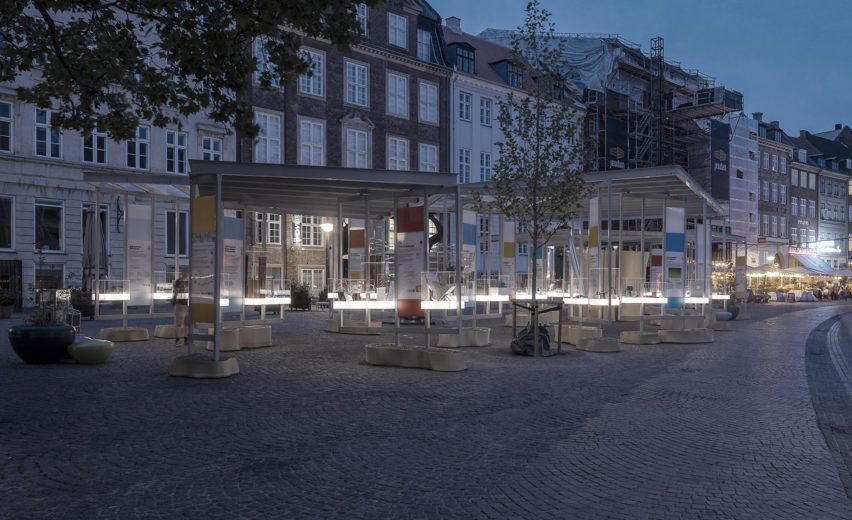Plastic has a crucial role to play in the battle against climate change, according to Thomas Drustrup, managing director of the Danish trade association for plastics.
Speaking to Dezeen in Copenhagen, the Danish Plastics Federation CEO said that people need to understand that plastics can have a positive impact on the planet if used correctly.
"Plastic has an image problem," he told Dezeen. "Plastic is a great material, but we need to make sure it doesn't end up in nature."
"We need to make sure we use it in the right places," he added.
Drustrup points to plastic's role in the shift toward green energy as a key example.
He said the material is essential in the development of wind and solar power solutions, which can enable a move away from using fossil fuels for energy.
"When we look at most oil consumption, it's for heating, energy and transportation, which together accounts for around 80 to 90 per cent," he stated.
"We want to move in a sustainable direction with wind power and solar. To do that, we need plastics," he continued.
"You can't build an effective windmill without fibreglass wings, for example."
Use plastic "where it makes sense"
The Danish Plastics Federation, also known as Plastindustrien, represents 270 plastic-producing companies including toy brand Lego and medical manufacturer Coloplast.
Dezeen spoke to Drustrup during the UIA World Congress of Architects, a conference centred around how the building industry can combat climate change, increase biodiversity and promote social inclusion.
The Danish Plastics Federation's contribution was the Plastic Pavilion, one of 15 SDG Pavilions built in Copenhagen to demonstrate sustainable construction practices.
Designed by architects Terroir, the pavilion was built almost entirely out of plastic, and mostly recycled plastic. Inside, it showcased applications where the Danish Plastics Federation believes plastic is the most suitable material.
These include for the medical industry, construction and food packaging.
"We want to tell a story about where plastic does make sense," Drustrup said.
"If we design it right, we have a great material that can be reused and recycled. What we don't need is products that we just make for convenience or to just use plastic without thinking because it's cheap."
"There are a lot of possibilities"
The demountable Plastic Pavilion was framed by I-beams made from glass-reinforced plastic, also known as fibreglass. These sat on 3D-printed "feet" made from a mix of recycled plastic and wood, filled with stones that weighed them down.
"There are a lot of possibilities that we want to show architects," said Drustrup.
"Fibreglass is stronger than steel, much more lightweight, and much more flexible in its use, so it's easier to reuse."
Drustrup is sceptical about the potential of bioplastics to replace oil-based plastics, highlighting claims that bioplastics could potentially be worse for the environment than conventional plastics.
He believes that advocating for bioplastics can have a negative impact, as it encourages people to treat the material as disposable.
Instead, he is optimistic that advancements in chemical recycling will make it increasingly easier to recycle oil-based plastics, reducing the need to extract oil from the ground.
"I don't think it will be in my lifetime that we'll be making plastics fossil-free," he said, "but we are going to get there."
Pandemic proved need for plastic
Drustrup highlights the Covid-19 pandemic, when plastic enabled the production of billions of test kits worldwide, as a turning point in proving plastic's ongoing importance to society.
The claim comes in spite of the estimated 26,000 tonnes of plastic waste that ended up in the world's oceans as a result of the coronavirus response.
The problem, Drustrup argues, is not the material itself but the systems in place for dealing with it after use.
The Danish Plastics Federation recently published a strategy document titled Responsible Plastics Production, which outlines how the plastics industry can tackle the issue of plastic waste.
"We as a society need to pay attention to how we use our resources," he concluded.
"As someone said to me, plastic doesn't have feet, arms or wings. So if it ends up in nature, it's probably because we put it there. The challenge for us is to make sure that doesn't happen."
Plastic Pavilion was on show from 19 June to 14 July 2023. See Dezeen Events Guide for an up-to-date list of architecture and design events taking place around the world.

